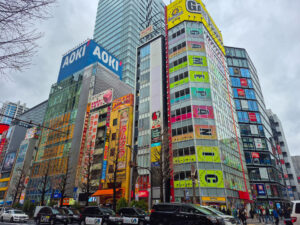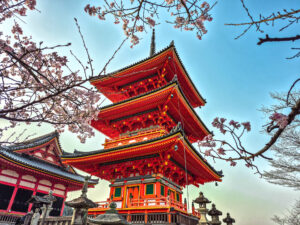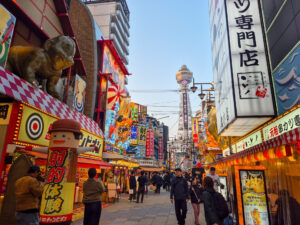The Ultimate 5-Day Tokyo Itinerary on a Budget
- July 28, 2025
- No Comments
Tokyo is the capital of Japan and a vibrant mix of cutting-edge modernity and rich history. Nowadays, Tokyo is the largest city in the world and an ever-changing flow of temples, shopping, delicious food, arcades, gardens and more. But did you know that you can experience all that on a budget? Here is my 5-day affordable Tokyo itinerary!
When I booked my Tokyo stay, I was more than last-minute. I had just finished my ski season in Niseko, in the North of Japan (check out my guides for that here), and cherry blossom season was fast approaching. Something I had not taken into account.
By the time I got to booking, most of the hotels in Tokyo were booked out and I had to jump between Mt Fuji, Kamakura and Tokyo. Something which I actually ended up enjoying, as my 2 days in Kamakura and Mt Fuji each were a nice break of the chaos of Tokyo.
That being said, I would highly recommend booking early, especially during cherry blossom season, both to get nicer accommodation and more budget-friendly. I stayed a total of 5 days in Tokyo and spent a lot less than I was expecting while still seeing everything on my bucketlist.
So, here is how to see Tokyo and all its attractions in a budget-friendly way in 5 days:
This blog may contain affiliate links to support the running of the blog. If you make a purchase through these links, I will earn a commission at no extra cost to you. Thank you.
Table of Contents
ToggleHow to get to Tokyo?
Whether you are flying into Tokyo or headed there from your previous destination by train/bus, here is exactly how to get to the city center:
Flying into Tokyo
There are two airports in Tokyo – Narita and Haneda. I personally flew into Narita which I believe is where most budget international flights land. Many say that Haneda is the nicer of the two, though I had no issues at Narita.
I usually check on Kiwi.com and Skyscanner for the cheapest flights and which airport to fly to.
How to get from the airport to Tokyo City Center
This will be different for each airport, but I actually used Google Maps to find the cheapest way to get to my accommodation.
Haneda Airport:
The cheapest way from Haneda Airport to the city centre is either by Monorail (600-700 yen/$4.50) or by Keikyu Airport Line (about 500 yen/$3.40 to city centre). Both will take around 45 minutes to an hour depending on where in Tokyo you are headed.
You can also get the Limousine Bus for a more convenient journey. It costs around $10 and takes 45 minutes to most hotels.
Narita Airport:
The cheapest way to and from Narita Airport is the Asakusa/Keisei Narita Line. It will get you to central for around 1,400 yen ($9.40) and takes a bit more than an hour.
Alternatively, you could take the Narita Express Train which takes 50ish minutes and costs ~3,250 yen ($22), or the Keisei Skyliner which takes around 40 minutes and costs ~2,470yen ($16.60). Your destination within Tokyo will depend on which one is better.
There is also an Airport Limousine Bus which is really convenient if you have heavy luggage as you will not need to drag it through Tokyo’s stations. The bus takes +/- 90 minutes and costs roughly $25.
From Osaka/Kyoto to Tokyo
You have three options to get to Tokyo from Osaka and Kyoto. The quickest is flying and can sometimes even be one of the cheapest, check for flights here.
The second option is the famous Shinkansen which costs around $110 and takes between 2.5 and 3 hours. Make sure to book a seat on the Mt. Fuji side (right side when coming from Toyko and left side when starting in Kyoto/Osaka) for the best views.
The last option is an overnight bus, which saves you a night on accommodation but the standard seats are not that comfortable (speaking from experience). If you book early enough, the sleeper comfort seats can still be cheap though and are well worth it. I personally went with Willer Travel as it is the most well-known, but you can find other options here.
Related Article: My Experience Taking the Night Bus from Kyoto to Tokyo
Where to stay in Tokyo?
Tokyo has an amazing public transportation network, however, it stops between around midnight and 5am. That means if you are out enjoying the nightlife or a late dinner, you should be really careful with timing or pick a close neighbourhood.
I’d say for anyone wanting to try the nightlife, definitely stay near Shinjuku. Otherwise, good areas are Shibuya, Asakusa, Ginza and Tokyo Station.
Best hostels in Tokyo for backpackers:
Unplan Shinjuku Hostel Den
LYURO Tokyo Kiyosumi
Resol Poshtel Tokyo Asakusa
First Cabin Ichigaya
Avoid: TenTen Guesthouse Asakusa – I stayed here and felt really unsafe as a solo, female traveller.
Best budget hotels in Tokyo:
How to get around Tokyo using public transport?
Tokyo’s public transportation network is extensive and pretty efficient. You can either buy single trip tickets at the ticket machines each time or use an IC card. An IC card is a prepaid card that you can use for transportation or even the convenience stores, lockers and many more things around Japan.
Tokyo’s version is called Suica but you can also use Osaka’s Icoca card or any other. Prices start at ¥1000 including a 500yen deposit that is refundable at the end of your holiday. The other 500yen are loaded onto the card. You can buy the ICOCA at JR stations or Kansai airport and top it up at any train/subway station and most convenience stores. You can also add the card directly to your Apple wallet.
I used Google Maps to get around Tokyo and navigate the subway system and found it pretty easy. It will tell you where to get on and off and even which exit to best take (stations in Japan have MANY exits so getting the right one will save a lot of time). You likely will still get lost – I once spent 30 minutes running around Shinjuku station and could not find the exit. It’s part of the experience 😀
Ultimate 5-Day Budget-friendly Tokyo Itinerary
Here is everything I would do if I had 5 days in Tokyo, not including day trips ito Mt. Fuji and Kamakura. I’d highly recommend adding time on for both and more than one day for them if you can, it is so worth it!
Related article: How to Spend Two Days in Kamakura
This is a budget-friendly guide so I have left out some of the popular spots like Shibuya Sky (I give a free alternative), TeamLabs, Go-Karting and Disney Resorts which are a little more pricy. If any of these are on your bucketlist and within budget, they are well worth adding to the itinerary.
Day 1: Shinjuku, nightlife and 360 views of Tokyo
Day 2: Harajuku and Shibuya
Day 3: Asakusa and Tokyo Skytree
Day 4: Electric Town and Imperial Gardens
Day 5: Shrines and Fish Market
Day 1: Shinjuku and 360 views of Tokyo
Explore the lively streets of Shinjuku
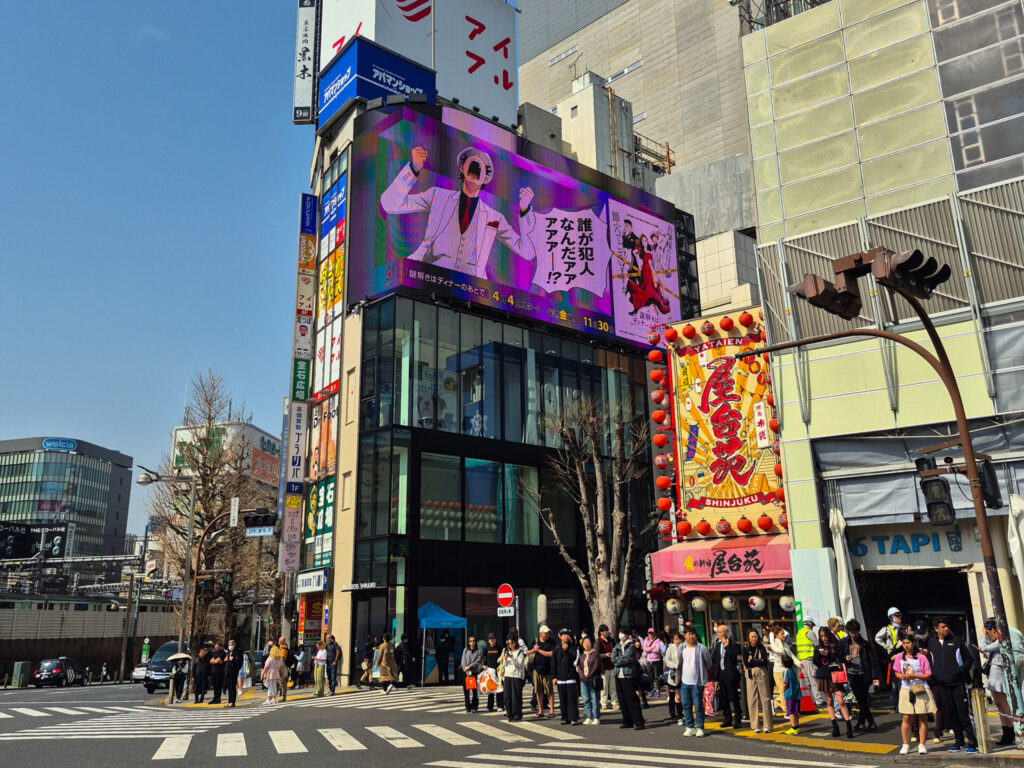
Day 1 is likely when you arrive in Tokyo after a long flight. Once you have made your way from the airport and checked into your hotel, it is time to explore the streets of Japan for the first time.
Shinjuku is a great area to start your tour of Tokyo as it is one of the liveliest, with the typical skyscrapers full of neon lights, packed arcades, any store you can think of and all in a walkable criss-cross of streets.
While there are many sights in the area, I would start by walking around and taking it all in. Arriving in Tokyo for the first time can be overwhelming, and Shinjuku is a great place to get that initial feel for the organised chaos.
This is also a great time to explore some shops you can’t miss while in Japan, such as Daiso, Don Quijote, GU (Uniqlo’s more affordable sister shop), several shopping malls such as LUMINE EST Shinjuku and my personal favourite, all the convenience stores. The first time in a Japanese 7-Eleven always feels like Christmas morning. There are so many delicious looking but still affordable things to try out!
Head to the Tokyo Metropolitan Building for free 360° views over Tokyo
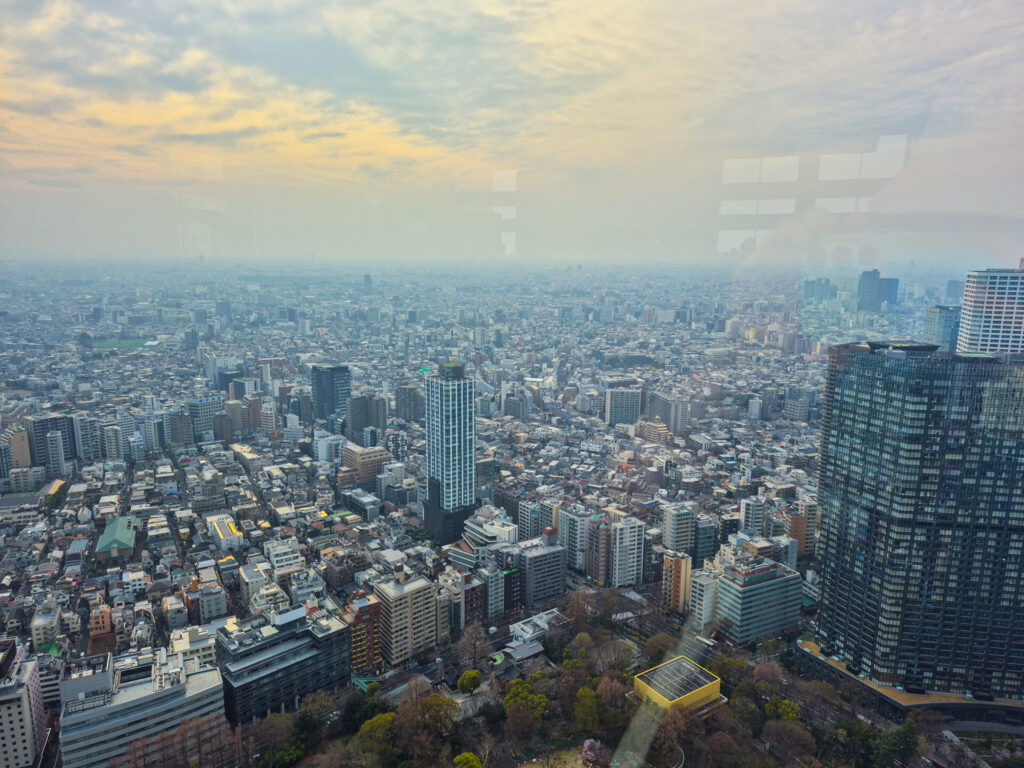
The Government Building is one of the best budget-friendly things to do in Tokyo and a great alternative to the pricier Shibuya Sky. It has a North and South Tower which both have 360° observation decks on the 45th floor. You can check the queue times for both towers here.
Both towers have similar sweeping views over Tokyo. On a clear day, you can see as far as Mt. Fuji. South tower is open from 9.30am to 5pm and North tower until 9.30pm.
There are two lifts for each tower and it does get busy, I waited about 30 minutes at 3pm. It could be longer closer to sunset, but that is also one of the best times to head up to see the city come to life at night. There’s a café at the observation deck if you want to wait around for sunset.
Go for dinner at Omoide Yokocho
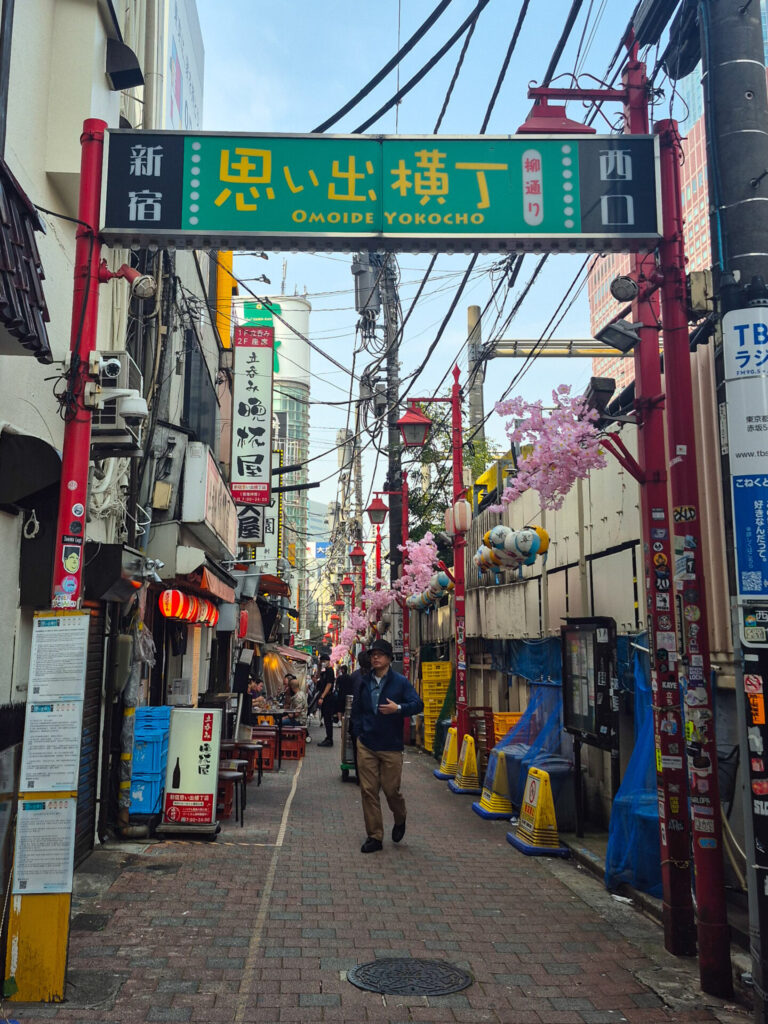
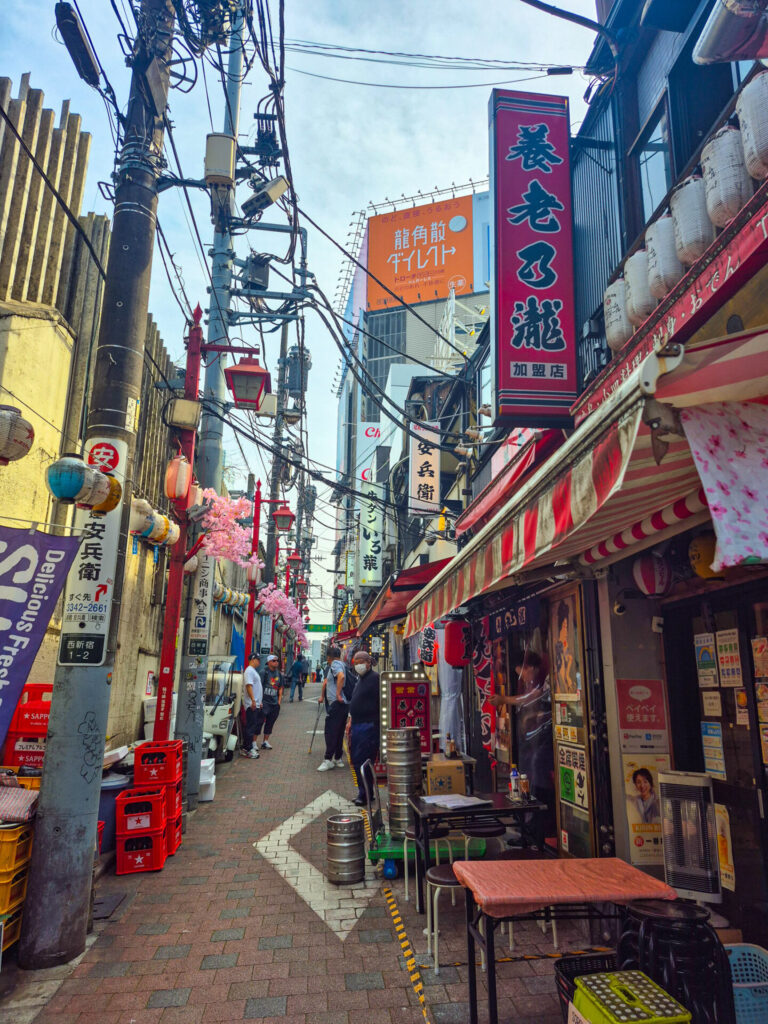
This alley, nestled just around the corner of Shinjuku station, is often referred to as Memory Lane. Why? Well, it is a reminder of what Tokyo looked like before the bright neon lights and skyscrapers became the norm.
It dates back to just after World War II, where this open air market (illegally) materialised in the burnt-down remnants of Shinjuku to sell everyday essentials. While it has been knocked down by further fires and the construction of Shinjuku station, this one alley rebuilt time and time again.
Today, you will find eateries and bars here, serving delicious meals from cramped kitchens on tiny stools at the side of the alley. Most will sell some sort of charcoal-grilled meat skewers and also stews. A ton of them are Izakaya restaurants which are bar-type places that sell share food items.
I’d recommend just wandering down this lane and seeing which menu speaks to you and has space! You won’t be the only tourist here, but will also sit amongst many locals enjoying some food after a long day at work.
Find the Godzilla Head in the Kabukichō area of Shinjuku
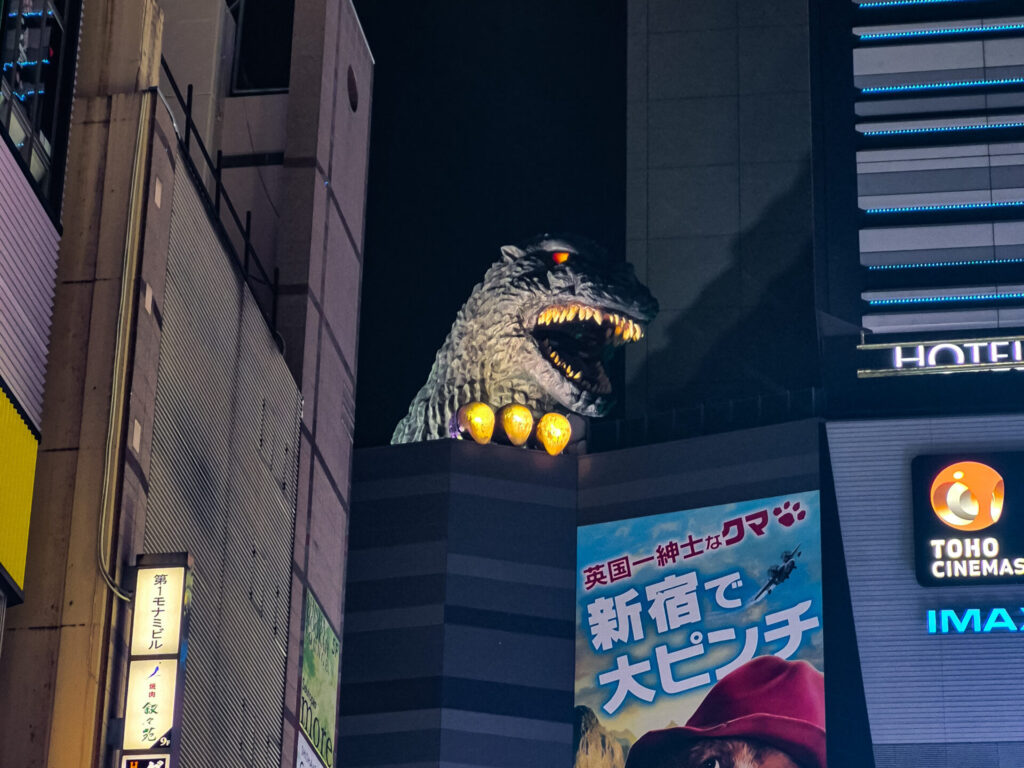
Kabuki-cho is located in east Shinjuku and unbeknownst to me at the time I found myself there, the red-light district of Tokyo. It is full of hostess/host bars that have men and women standing outside and trying to get paying customers in the bar where you are entertained by the hostesses/host against a substantial fee. Though they did leave me alone, I think I looked too confused and not expensive enough to be honest.
Some people say you need to be wary in this area, I think you just need your wits about you as much as anywhere else. It is worth seeing at night at least once as it becomes vibrant in its neon lights and the thousands of restaurants along the streets.
The main reason you should venture here though is to find the Godzilla head, best observed from Central Rd. It is smaller than you’d expect, but such a random addition to this district that you have to see it. Apparently it roars and spews smoke every full hour from noon to 8pm.
Watch the Giant 3D Cat play by Shinjuku Station
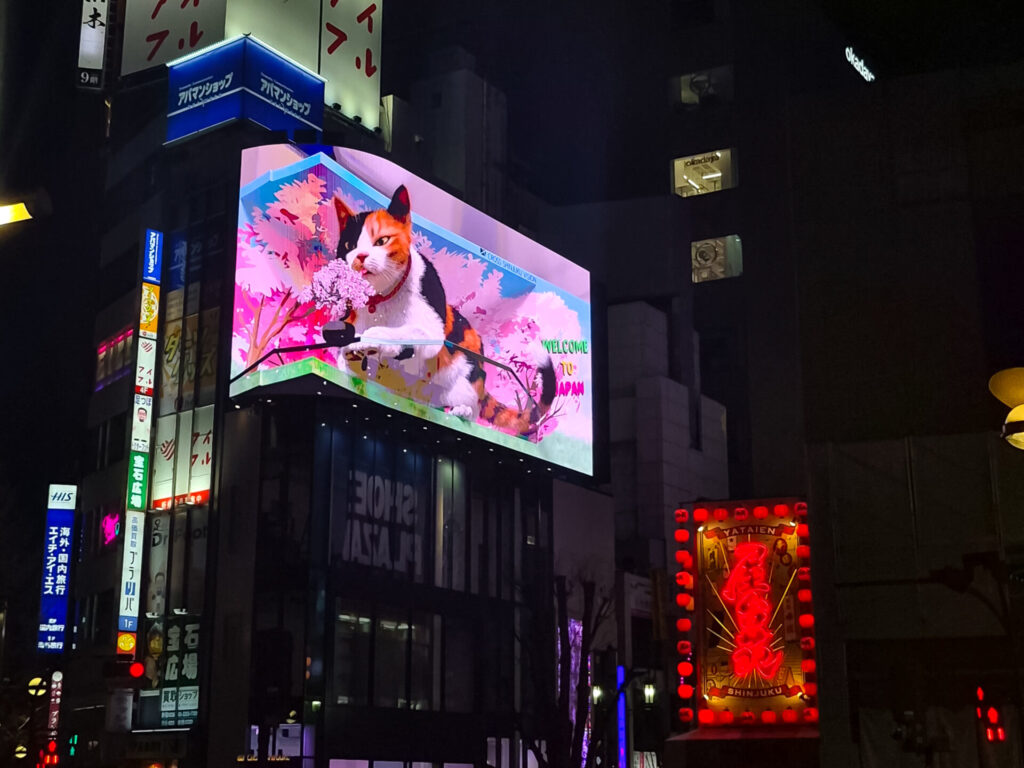
The most iconic and well-known attraction of Shinjuku is the huge 3D cat that plays across the neon screen of Cross Shinjuku Building. The 3D effect is impressive and the cat comes every few minutes, dotted between ads.
I found the 3D effect looked most realistic at night, which is also when they play the cat more frequently and with more interesting clips than during the day.
The crosswalk where the cat is located becomes alive at night too, full of buskers, party-goers and the Tokyo businessmen looking to forget the day.
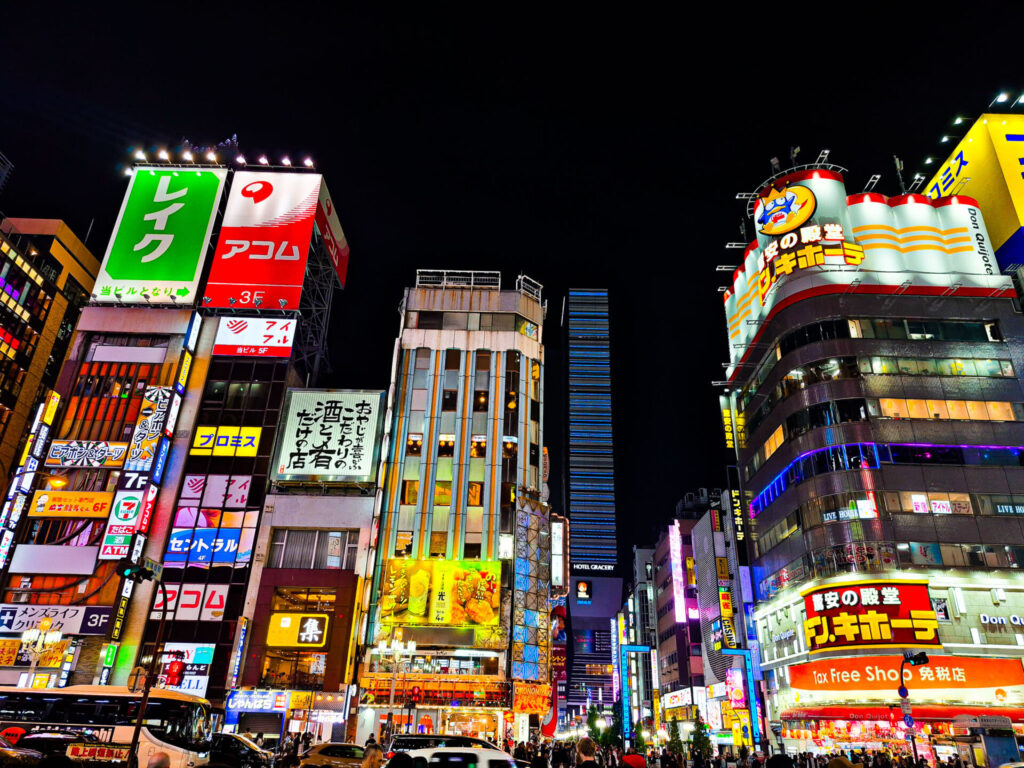
Finish the day with the fascinating bars of Golden-Gai
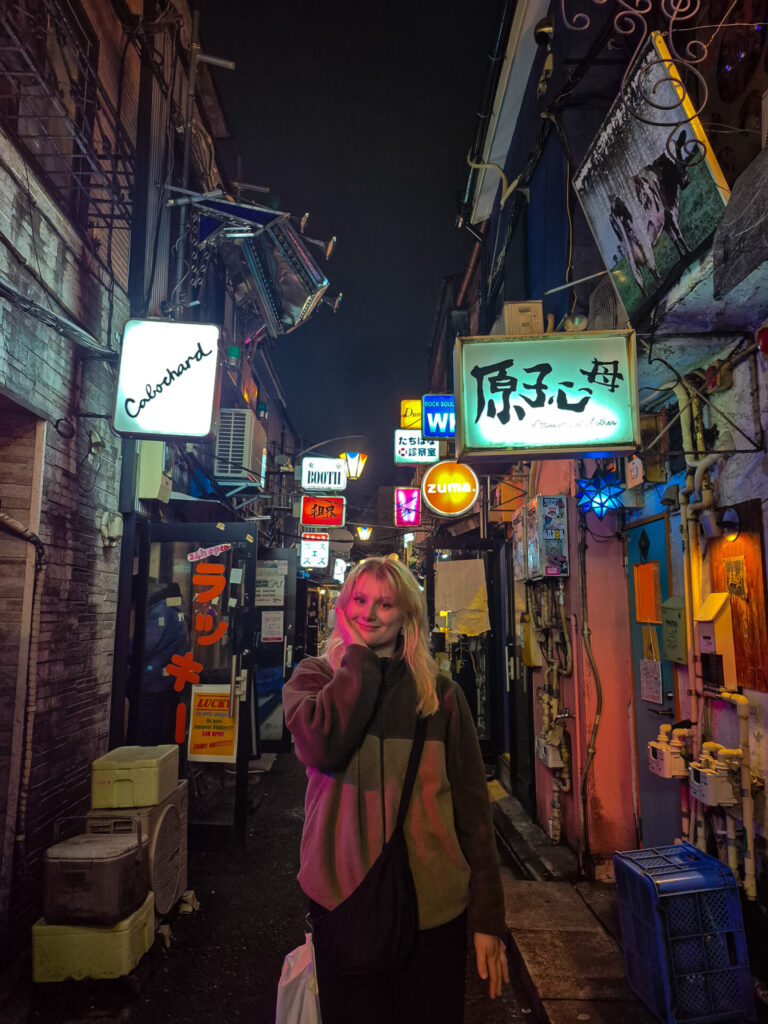
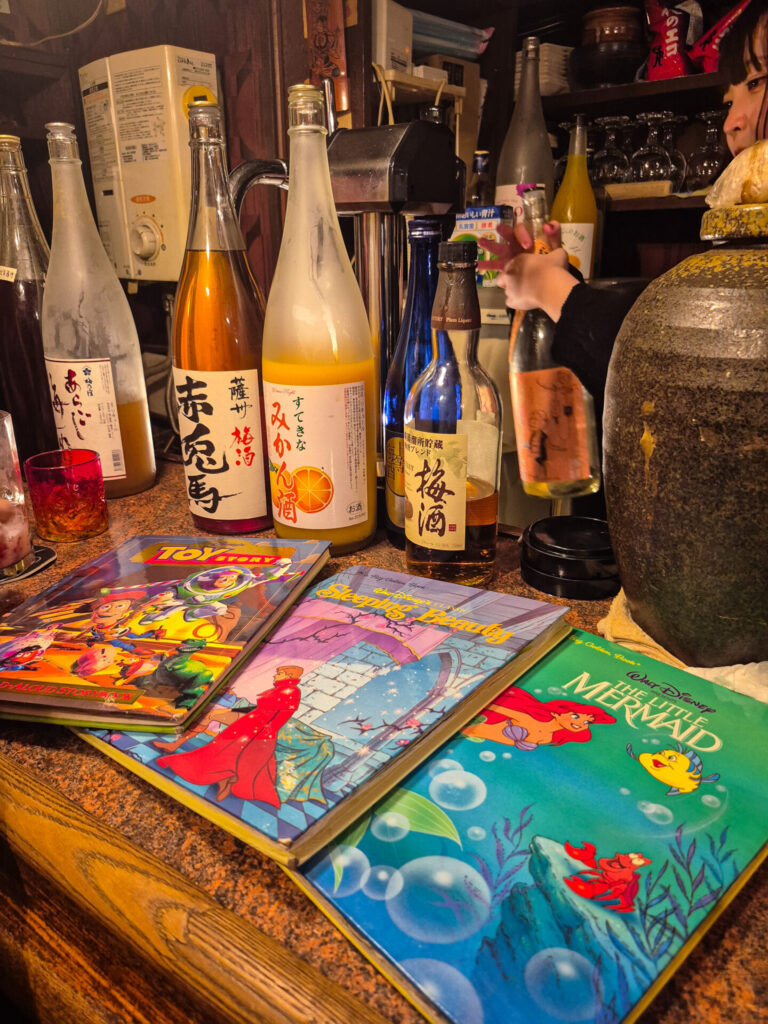
Entering the Golden Gai area of Shinjuku feels like entering an alternate era, with tiny alleys full of even tinier, mismatched bars and restaurants. Both foreigners and locals are plenty here, with some bars only accepting locals or “club members”.
Don’t let you put that off though. Golden Gai is one of those experiences you will remember for years to come. Each exclusive bar has a speciality or theme and sells local alcohol and sometimes snacks to the 5 or 6 seats that maybe fit in the bar.
Some bars have cover charges (1000-2000 yen/$6-14). I found though that most with cover charges then had cheaper drinks and those without charged around 1000yen+ for drinks.
Our bar was on the top floor, totally unassuming and we chose at random. You don’t really know what to expect until you enter an establishment here. Ours had friendly staff and delicious drinks, the menu of which was found inside old fairy-tale books. The entire evening here felt dreamy in that “expect the unexpected” way.
If you still have energy and nightlife is your thing, Shinjuku’s clubs and bars are really fun. Golden-Gai is a great place to start the night, then head on to one of the clubs (I can recommend Atom, T2 and Warp) or one of the many Karaoke bars, best enjoyed with a group of people. Most of those bars will have unlimited drinks included for a decent price and it is so much fun.
Day 2: Harajuku and Shibuya
Wander the colourful Takeshita Street
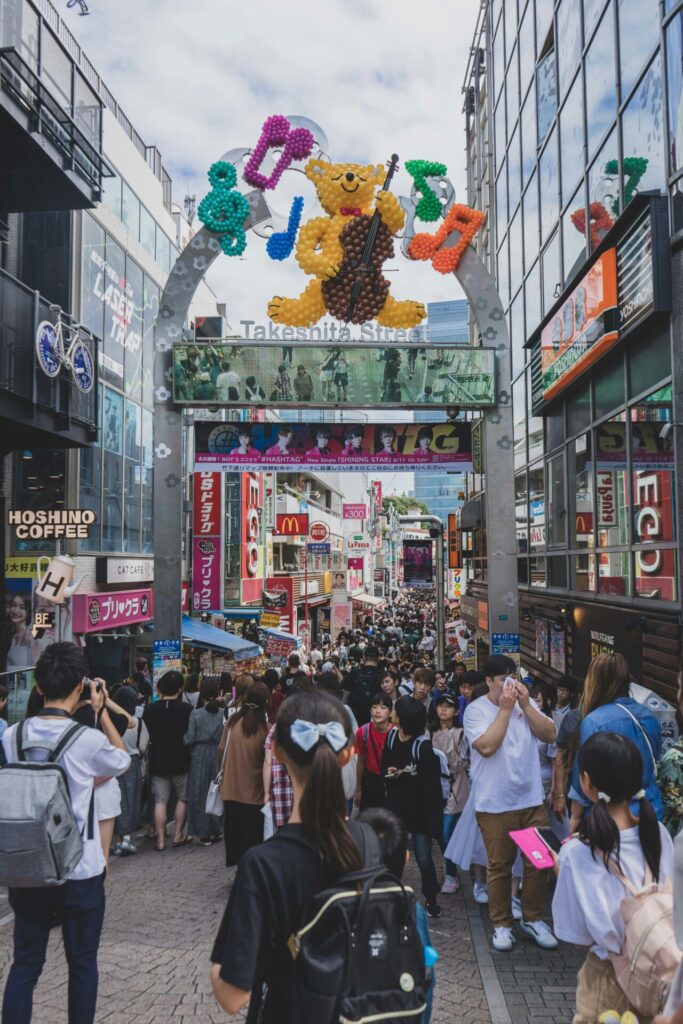
Welcome to the busiest street in Harakuju, possibly in all of Tokyo. It is known for its trendy fashion stores, unique accessories and its deep links to Japanese anime culture with cosplay shops and themed cafes.
Heading here earlier in the day will make the crowds a little more manageable.
Explore the rest of Harajuku
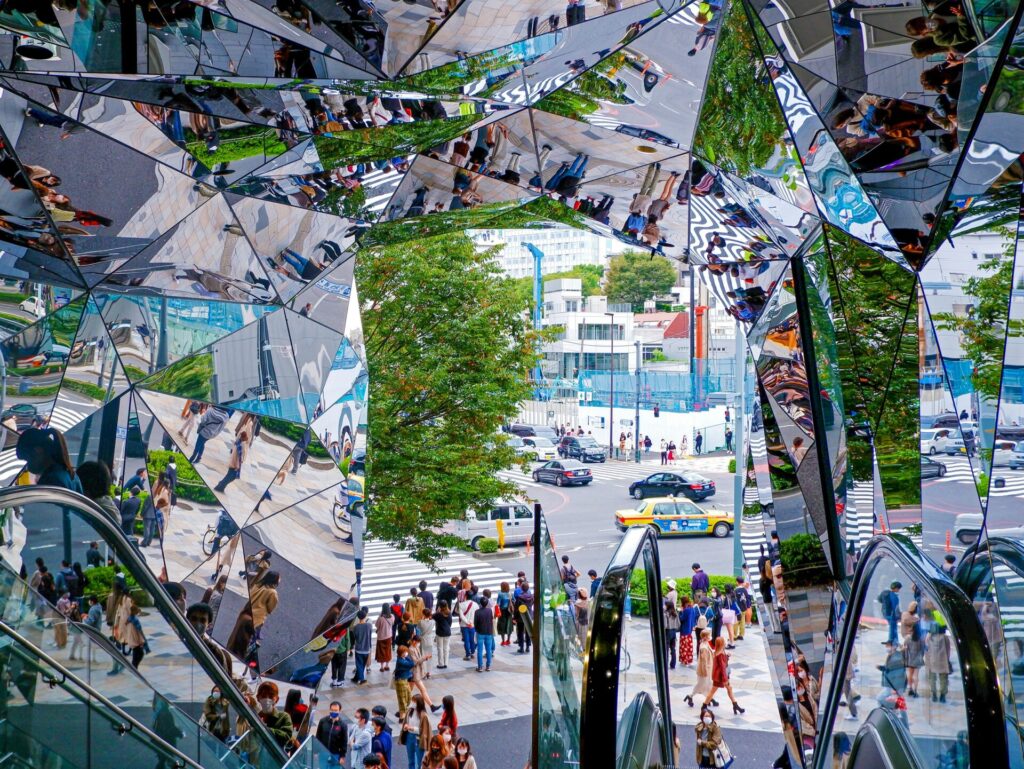
While Takeshita street is the centre of shopping in Harajuku, there is much more to the area. Cat Street is just around the corner and full of more “kawaii” shops and some great food options such as the delicious Esoragoto Udon.
Make sure to check out Tokyu Plaza shopping mall with its Kaleidoscope of mirrors. The popular store “niko and…” is also in this area, with tons of cute accessories and unique clothing items.
While here, I’d also recommend heading to Latte Pocket, which have THE CUTEST latte art you will ever see. A drink with the 3D art will set you back around $10 but it is worth it if you have the time and budget for this extra cuteness. You can prepare the character you want on your phone for them to recreate.
Head to the busiest pedestrian crossing in the world, Shibuya Crossing
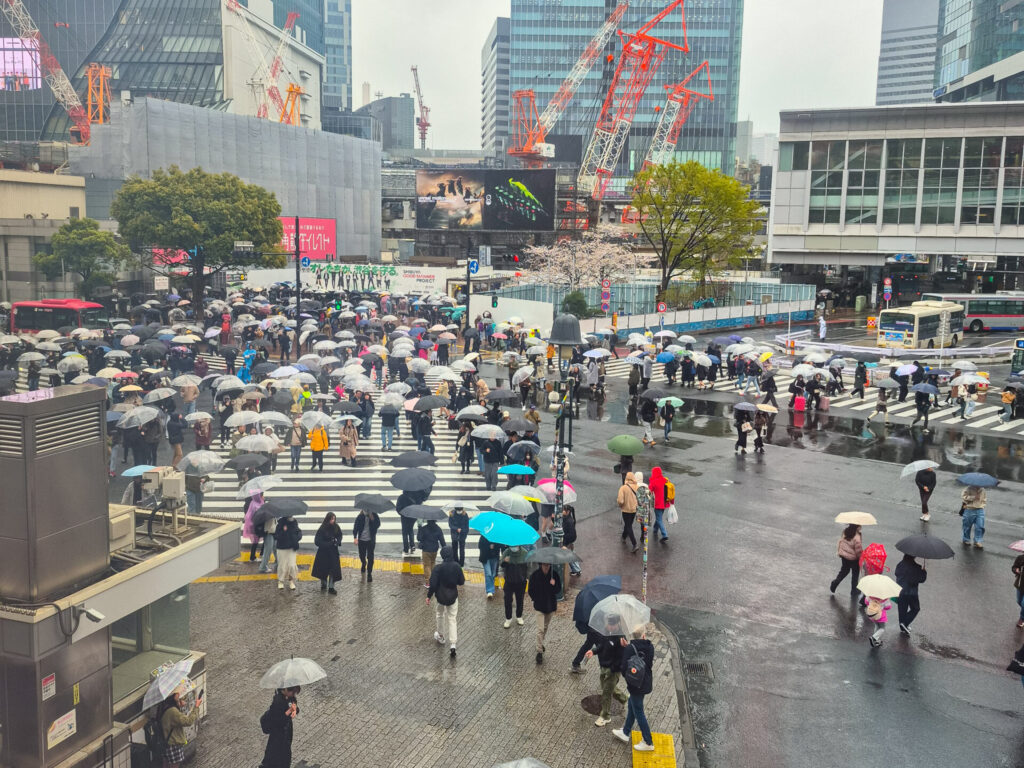
Shibuya crossing is one of those social media hyped things that are a little overhyped but still worth visiting. Shibuya Scramble Crossing is a big intersection with 5 different crossings that all go at the same time, leading to huge amounts of people to “scramble” across the road at the same time.
It is best to see this from above, which several paid but also free options for this. We went to the Starbucks that sits at one of the crossing points. You are supposed to buy a drink, but there is a cramped window by the escalators where you can get a view of the crossing for free. The Starbucks isn’t very high up and SO packed, so I don’t think its worth buying a drink for this view.
If you head to the Shibuya Mark City shopping mall and head up to its glass-window walkway on the upper floor, you will also get a great view of the crossing for free.
You could also head to the Share Lounge above Starbucks, where you can get a great view of the crossing as well as unlimited snacks and drinks for one hour for 1,650 yen ($11). I think it’s worth it if you also use it as a food stop.
Say hi to the famously loyal Hachiko
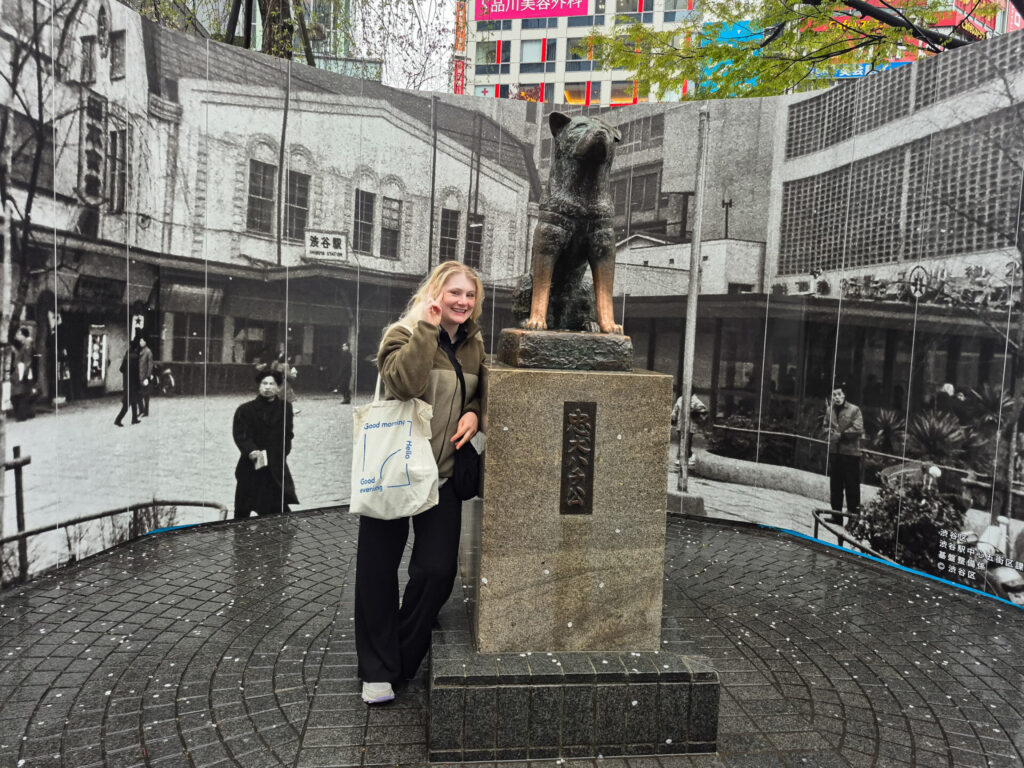
Just around the corner, you will find the statue of Hachiko. It is completely free to visit, though you will need to wait in a pretty long line to take a photo (took like 10 minutes when we went).
The statue honors the most loyal dog in Japan, Hachiko. It is said that around the 1920s, this Akita dog waited outside Shibuya station every day for his owner Professor Ueno to arrive back from work. Until one random day, his owner suffered a fatal stroke and did not return, yet the dog continued to wait at this spot for years to come.
Try some authentic conveyor belt sushi
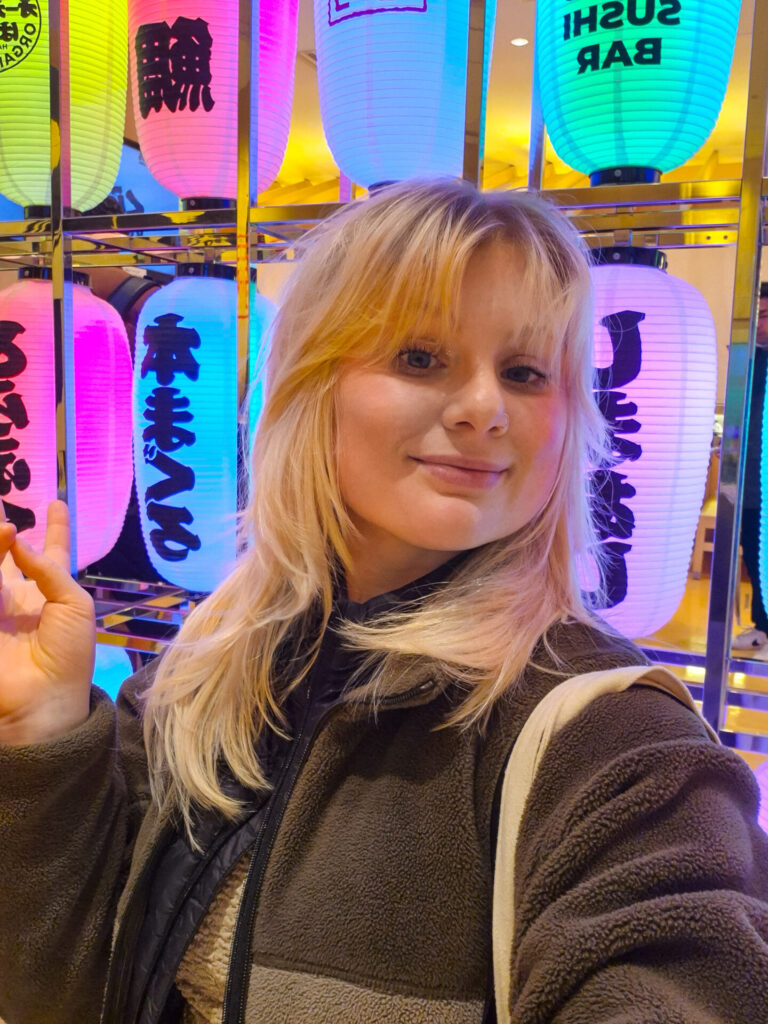
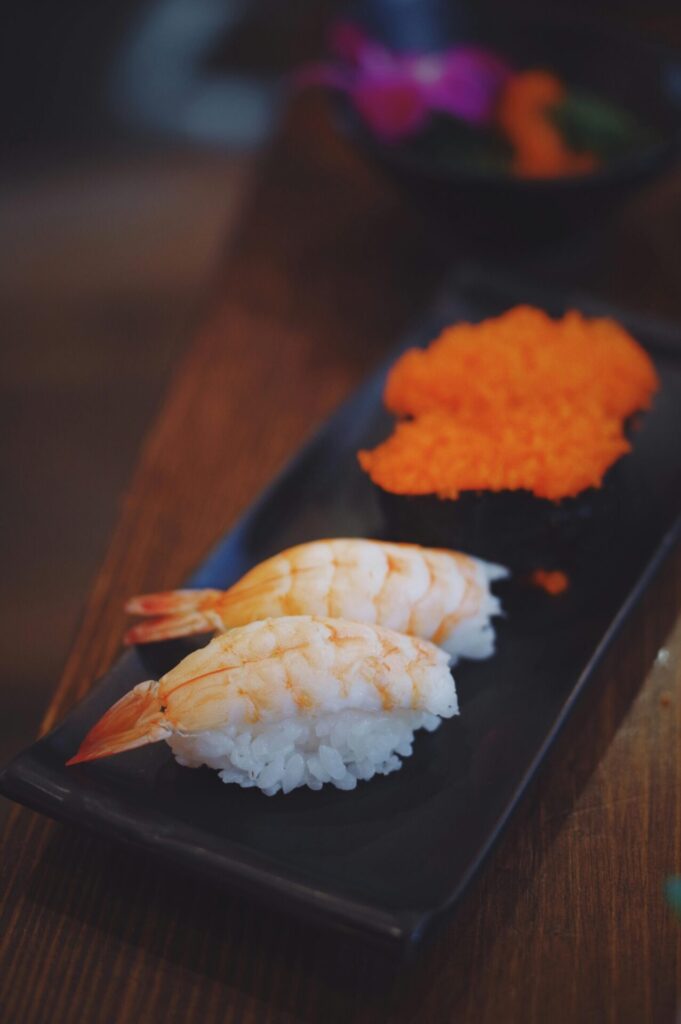
While not the highest quality sushi you will find in Tokyo, conveyor belt sushi is still delicious, affordable and a Japanese staple everyone should try.
We headed to Kura Sushi Shibuya Ekimae and found the food great as well as super budget-friendly. With drinks, we spent no more than $10 per person with each ordering one too many plates. It is too fun to see the plates race to your table after ordering.
An alternative in the area is Hakata Tenhin Shibuya Minamiguchi, a local, affordable Ramen restaurant with delicious dishes.
Wander the neon streets of Shibuya
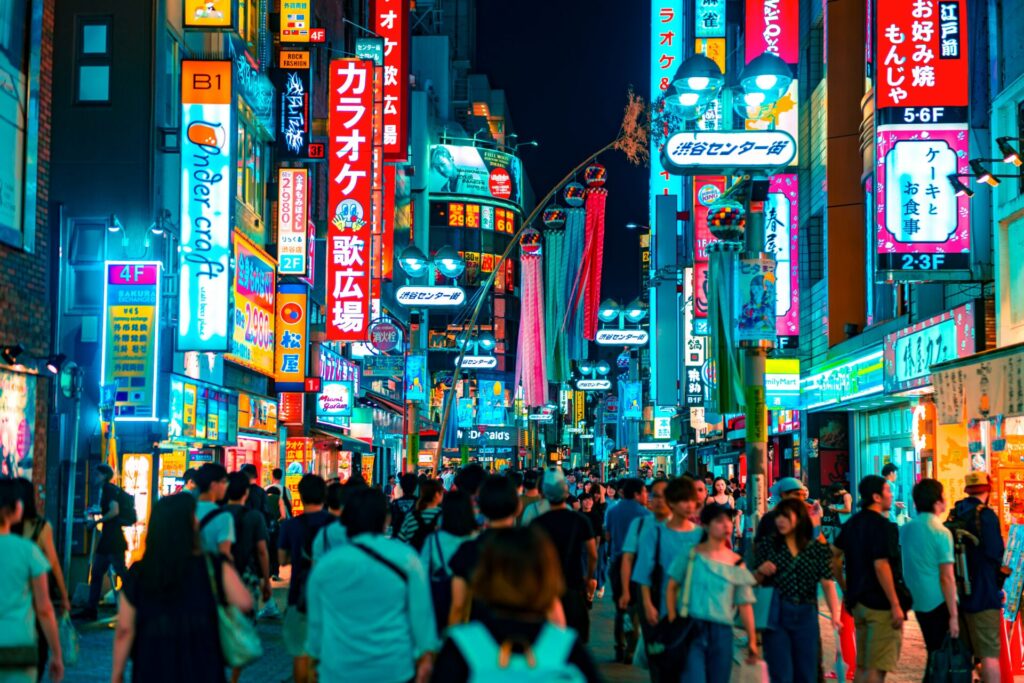
Shibuya at night transforms into a neon world of lights, with streets lined with restaurants, bars and shops that are open late into the night.
Center Gai is a great pedestrian zone to explore, full of music and a contagious energy.
Day 3: Asakusa and Tokyo Skytree
Start the day at Sensō-ji Temple
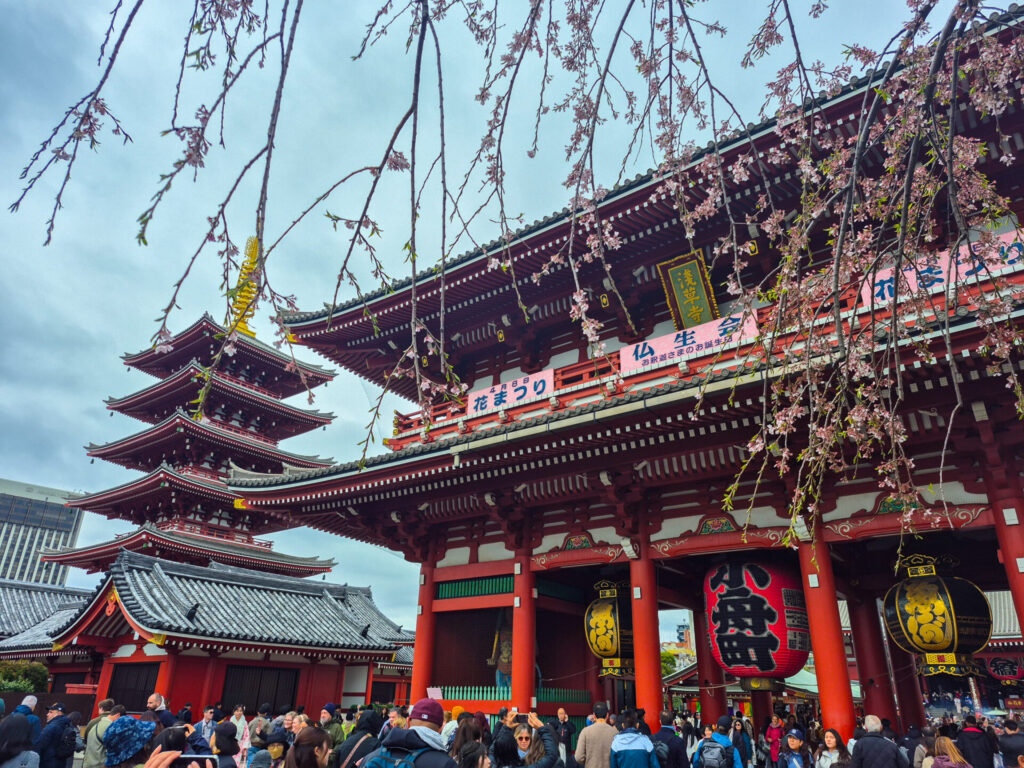
I actually stayed close to this temple in the Asakusa neighbourhood for part of my time in Tokyo and loved the area. The entire temple grounds are massive with beautiful red buildings and big lanterns hanging from the gates and halls.
It is Tokyo’s oldest temple, completed in 645, and said to be the temple of Kannon. Kannon is the goddess of mercy and said to be a protective force.
There are several buildings as part of the temple, such as the 5-storied pagoda, the main hall, Nitenmon Gate and several other halls. Entry to all areas is free.
Grab some treats and souvenirs at Nakamise Shopping Street

You enter Sensō-ji Temple through Kaminarimon Gate, also called Asakusa’s Thunder Gate. It has a huge lantern hanging from the middle. After passing through the gate, you enter Nakamise, the famous shopping street in Asakusa that leads to the temple.
Shops here sell a variety of souvenirs as well as Japanese snacks and sweets. It is one of the oldest shopping streets and meant to replicate what an Edo-era street in Tokyo may have looked like.
The street is always really busy, but the chaos somehow adds to the special atmosphere of this area. Next to Nakamise you will find Kan’non-Dori, another street full of street food and souvenir stands that is worth also checking out.
Get some special kitchen ware from Kappabashi Kitchen Town

Walk the small alleys and streets of Asakusa, full of more shops and restaurants, to the famous Kappabashi Kitchen Street. The entire street is lined by restaurant suppliers and kitchen-equipment dealers and a DREAM for any ceramics lover.
Head here to get a personalised Japanese knife (these are world-renowned for their quality) or to grab some unique and handmade bowls, chopsticks or sake cups for home. Everything here is beautiful and really fair price-wise. I could have walked away with 50 beautiful bowls if I had space in my suitcase.
Head to THE landmark of Tokyo: the Skytree
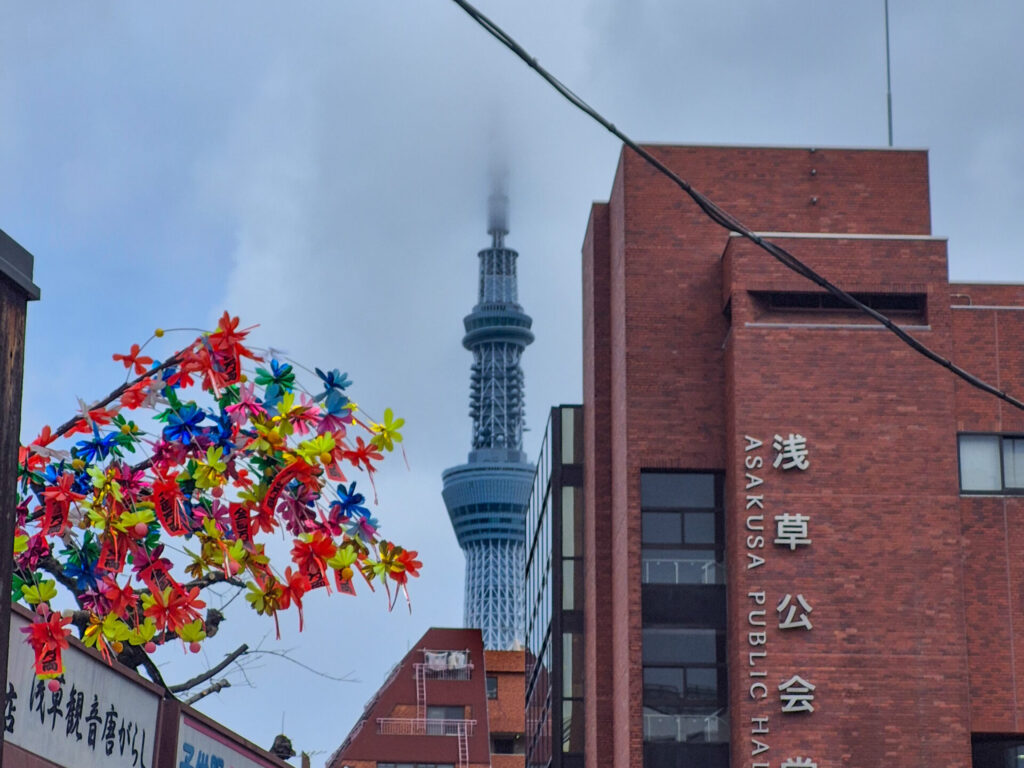
Tokyo Skytree is one of those memorable landmarks that you would recognise on any photo of the city. At 634 meters, it sticks out vastly from the surroundings and is the tallest tower in Japan.
It has two observation decks with sweeping views over Tokyo that cost around $20 to go to both decks or from $15 for just the lower deck (get tickets here). I have listed a free alternative for views in the activity below.
I think it is more than worth to see the Skytree from below as it is a really cool structure, but heading up is one of those cool things that you can do, but it won’t affect you negatively if you don’t.
Head to Asahi Sky Room for rooftop views over Asakusa and beyond
If you want similar views (a little lower) to the Tokyo Skytree for a fraction of the price, head to Asahi Sky Room. It’s a rooftop bar which you can visit simply by buying a drink there. Drinks start at around 800yen ($5). The best part is that you will even be able to see the Skytree from the windows here, adding to the amazing views of Tokyo’s skyline.
There are also a few good restaurants in the area, such as Asahi Brewery for Burgers, Sushiro for converyor belt sushi and Arabian Kebab & Biryani House Asakusa for affordable Arabian food.
Day 4: Electric Town and Imperial Gardens
Start the day with a stroll through Ueno Park
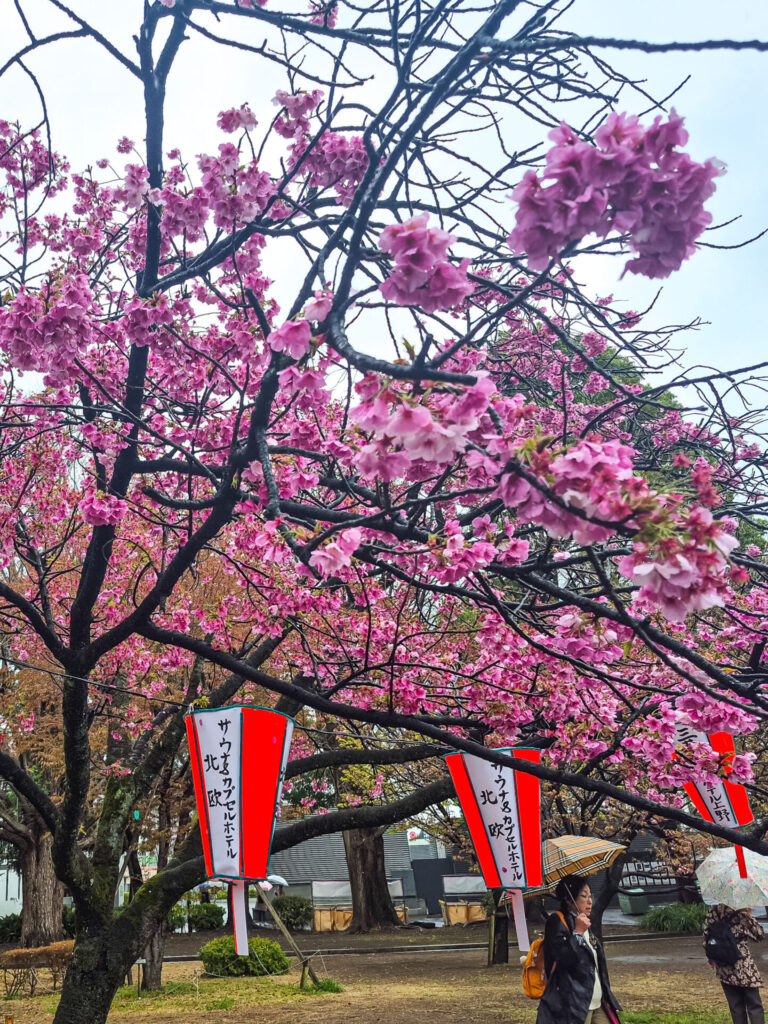
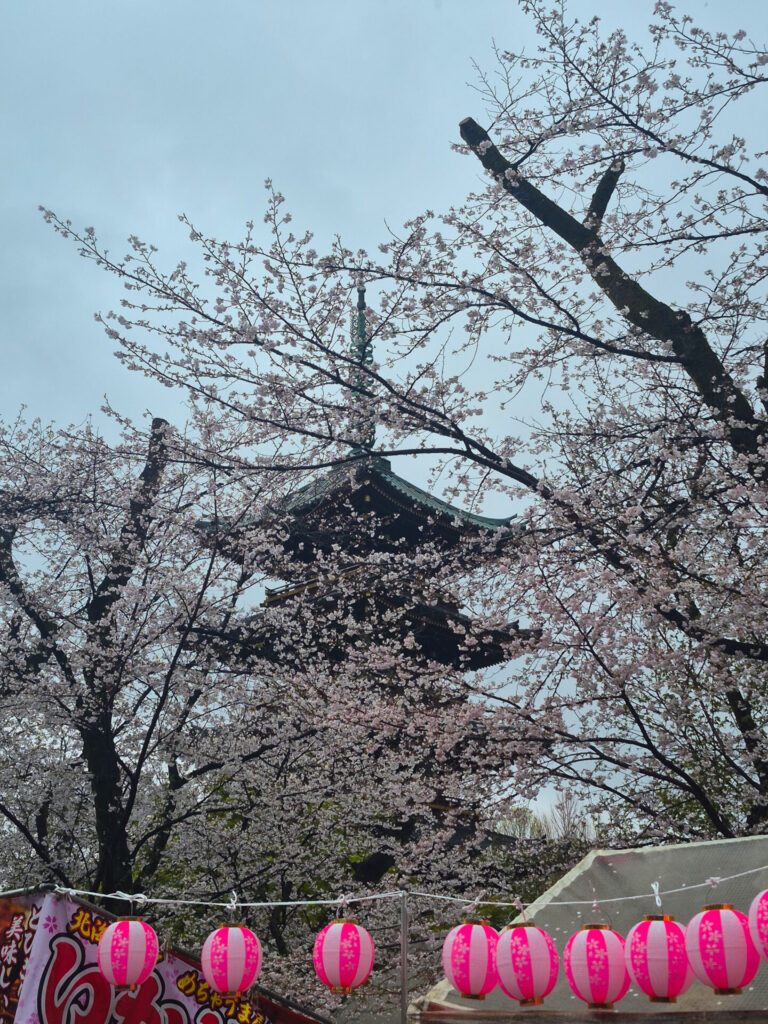
Ueno Park is a huge green area with a beautiful pond and several temples and shrines. During cherry blossom season, the park turns into one of the most beautiful blossom viewing spots in Tokyo.
However even outside of that season, the park is well worth a visit. It used to be part of Kaneiji Temple, one of the city’s largest and wealthiest temples during the Edo Era.
Some of the places worth visiting in the park are the Statue of Saigō, Shinobazu Pond, Gojoten and Hanazono Inari Shrines and Toshogu Shrine.
Learn about Japanese art and architecture at Tokyo’s National Museum
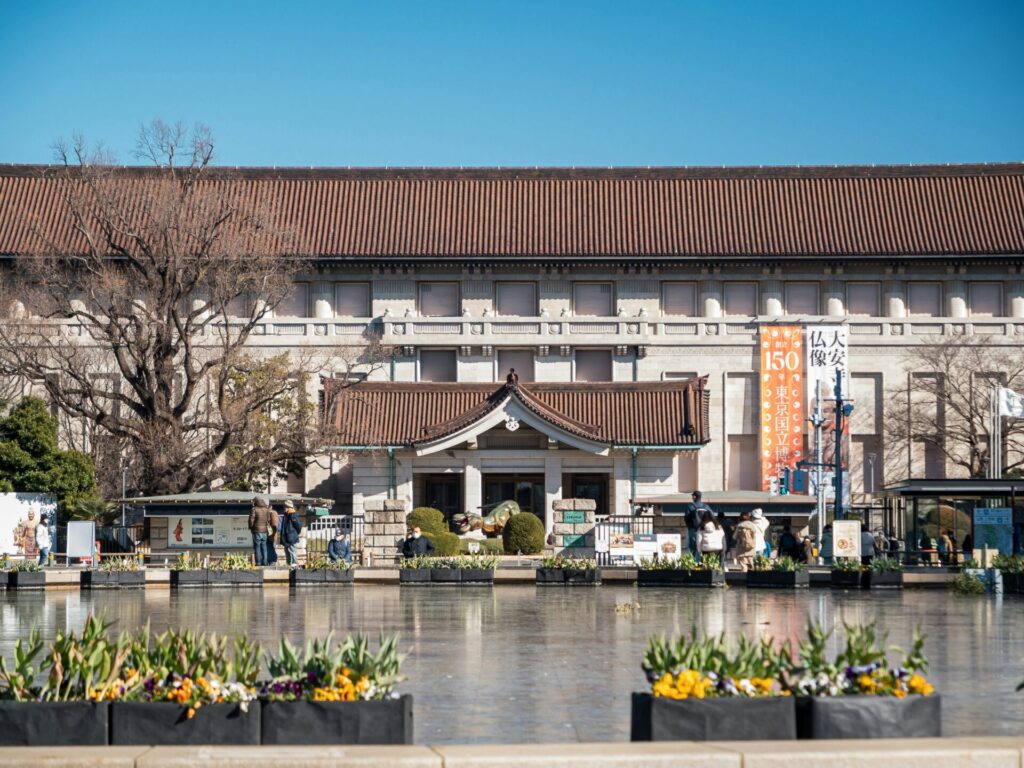
While in Ueno Park, a stop at Tokyo National Museum is well worth it. It is the oldest and largest museum in Japan which offers a huge variety of exhibitions of art and archeological artifacts.
Many say this is one of the best museums in Asia to learn about the history and culture of Japan and beyond. Entry costs 1000yen ($6.70).
Marvel at the neon lights of Akihabara Electric Town
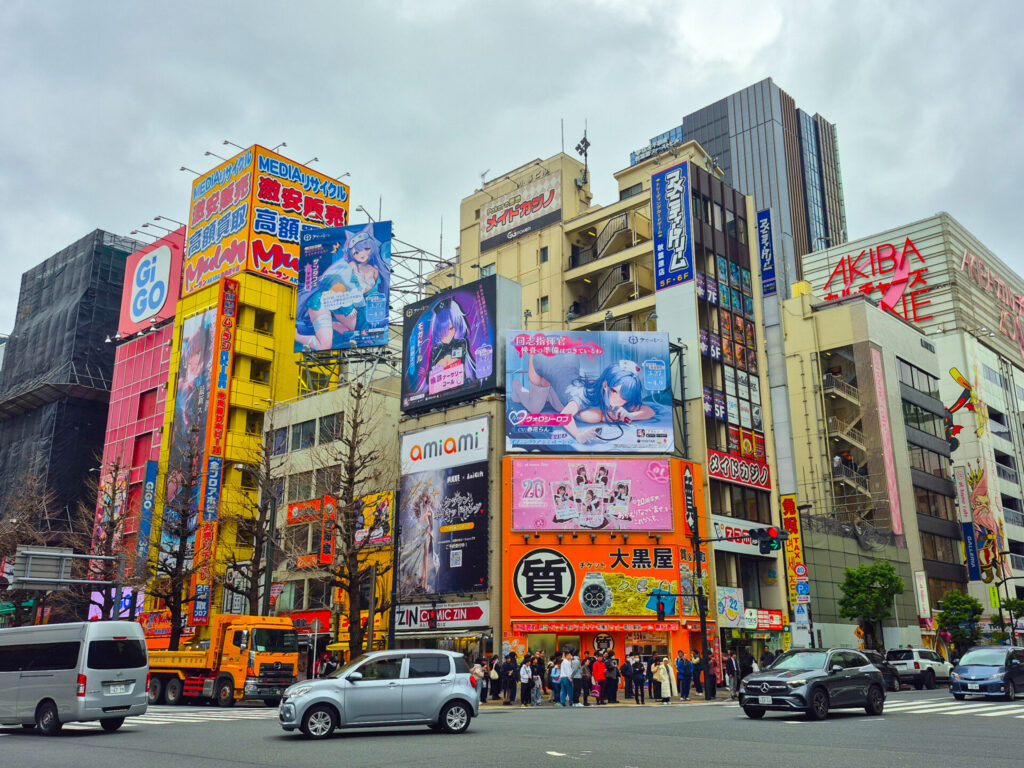
If you are into Anime or Video Games, or simply want to see an absolute neon light explosion, this is the area for you. The tightly packed buildings in the area are full of everything anime, manga, video games, merch, idols and maid cafés.
Basically it is the place to go for your “geeky” dreams, in the best way possible.
Visit the Imperial Palace and Gardens
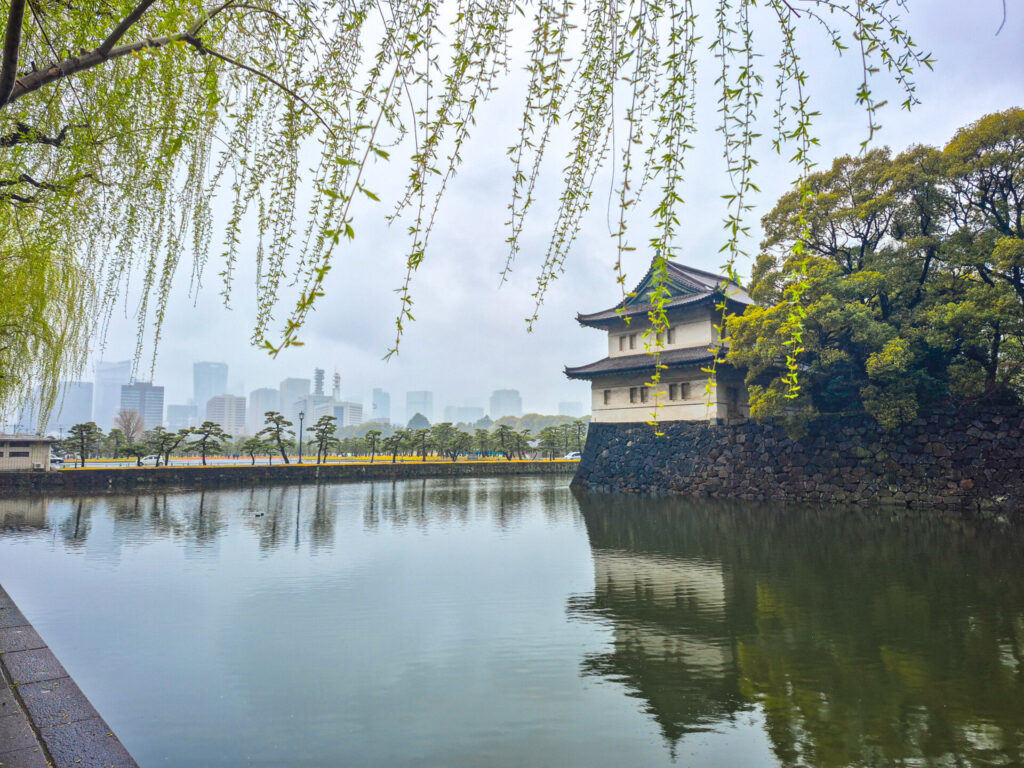
The Imperial Palace is the main place of residence of Japan’s Imperial Family, situated on the former site of Edo Castle. The huge palace and its gardens is surrounded by a moat and huge stone walls, which turn into one of the best cherry blossom viewing spots in spring.
The palace ground are only accessible via a tour, which is held in English and Japanese, twice daily, Tuesday to Saturday. This is free but it’s advised to book in advance as spots go quickly. For this tour, you meet your guide at the Kikyomon Gate, a 10-minute walk from Nijubashimae Station or Otemachi Station.
The East Gardens of the Palace are also free and can always be visited (except Monday and Friday) but bring minimal bags as they are checked and EXTREMELY strict. The gardens are stunning, well-maintained and make for a lovely walk. You can access the gardens through Otemon Gate, Hirakawa-mon Gate, and Kitahanebashi-mon Gate.
On Sundays, you can rent bikes for free from 10am to 3pm to cycle around the palace walls.
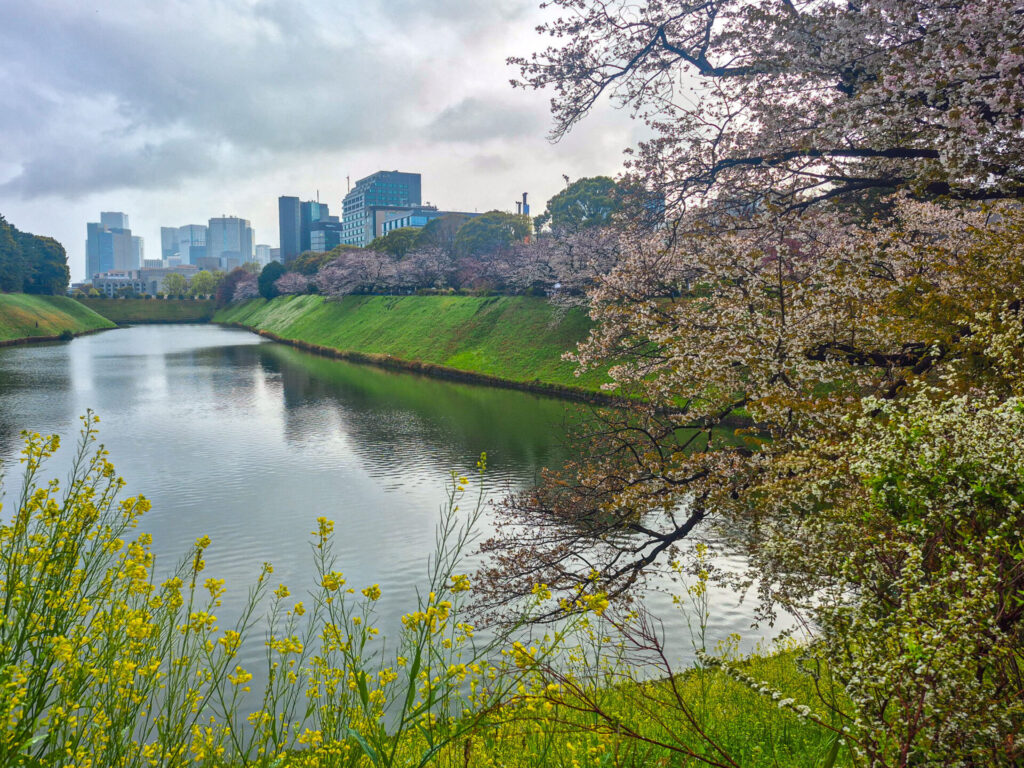
Day 5: Gardens, Shrines and a Fish Market
Enjoy the serenity of Shinjuku Gyoen National Garden

Head back to the Shinjuku area for one of the most beautiful parks in Tokyo, Shinjuku Gyoen National Garden. It holds three different types of gardens: The traditional Japanese landscape garden, the formal French garden, and an English landscape garden.
Stepping into this green space feels like a magic gate out of busy Tokyo and into another , more serene timeline. Admission is 500yen ($3.40) and the grounds are closed on Mondays.
Explore the impressive Meiji Jingu Shrine
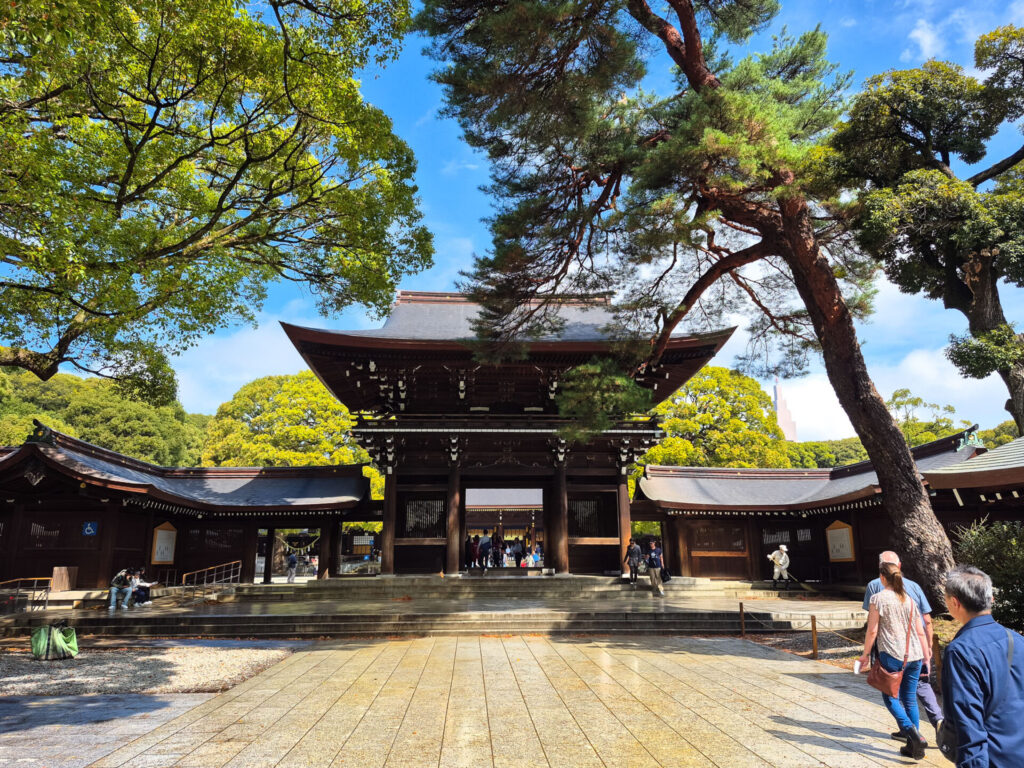
If you go visit just one shrine in Tokyo, let it be this one. It is located in the middle of a lush, green forest and the grounds are absolutely beautiful. Best of all, entry is completely free.
This Shinto shrine is dicated to Emperor Meiji and Empress Shoken, under who Japan changed into a modernised nation. While at the shrine, make sure to fill out an “Ema” plate with your wishes. Also check out the two trees coined “Marriage Trees” which have grown together and intertwined ad are now said to bring luck and love.
When exiting the area, you will also come past a wall of sake barrels, each painted by the area of Japan that donated the barrel.
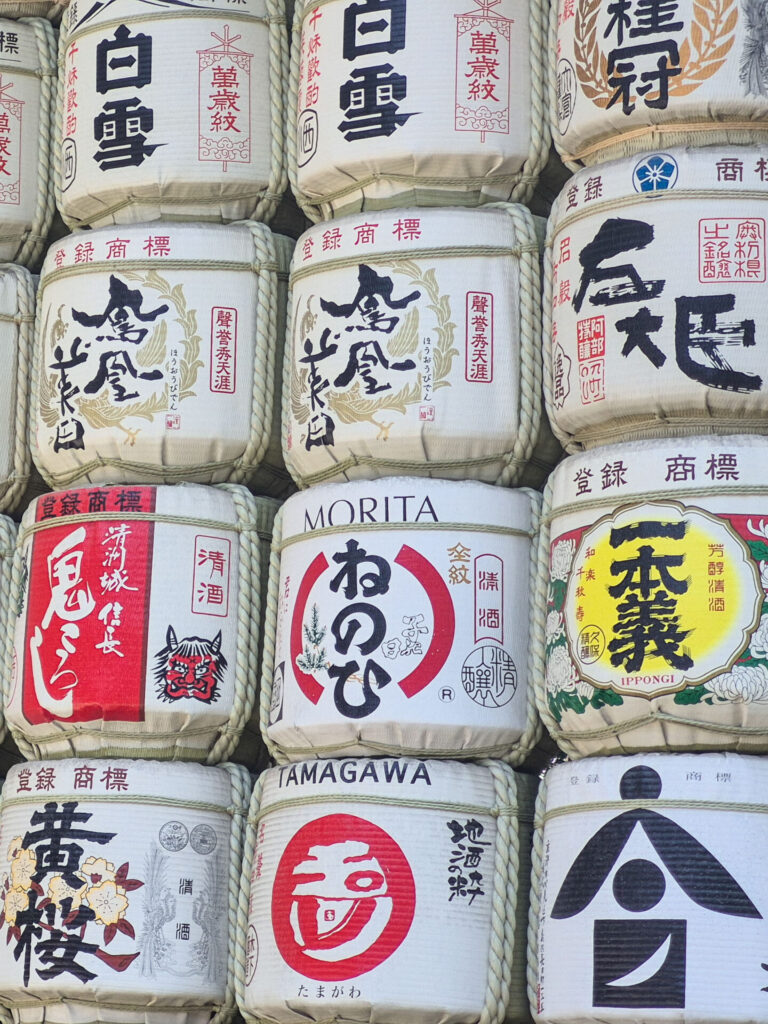
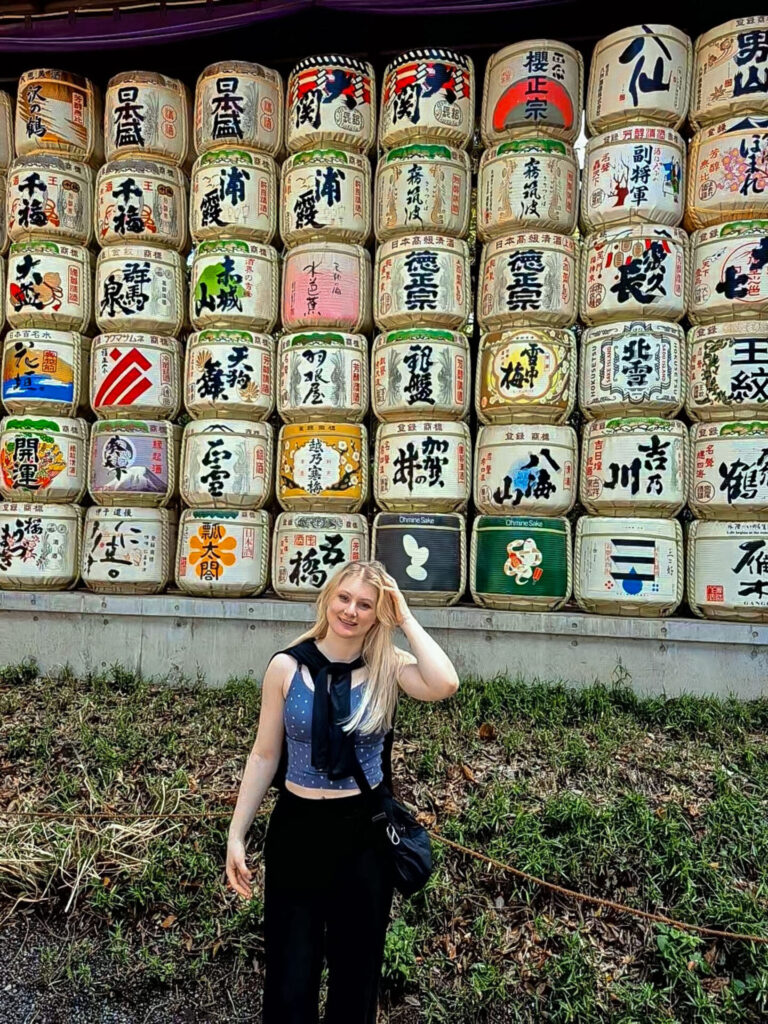
Enjoy the greenery and cherry blossoms of Yoyogi Park
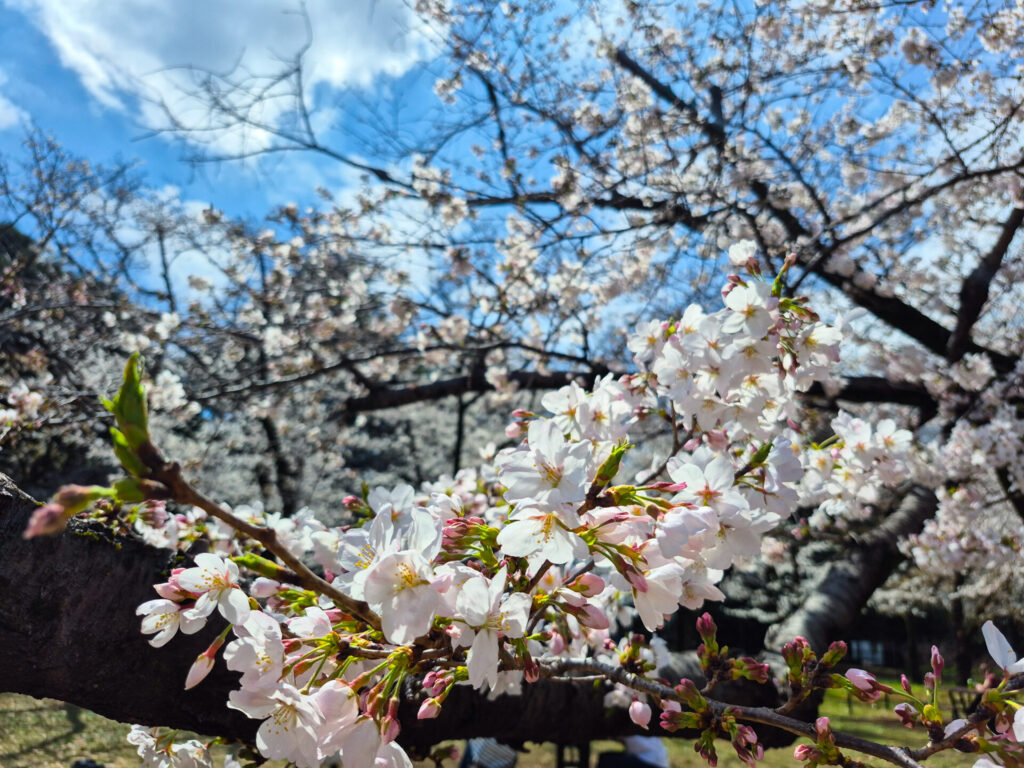
We are truly ending our time in Tokyo with some of its most beautiful nature and parks, though feel free to pepper these anywhere into this itinerary for when you need an escape from the noise and lights.
Yoyogi Park is a dream during cherry blossom season. I have never seen this many cherry blossom trees in one place.
However, even outside of the season, the park is a beautiful location for a picnic or stroll. There are also a bunch of food carts here where you can buy snacks and eat them by the ponds.
Enjoy the foodie wonderland of Tsukiji Outer Market
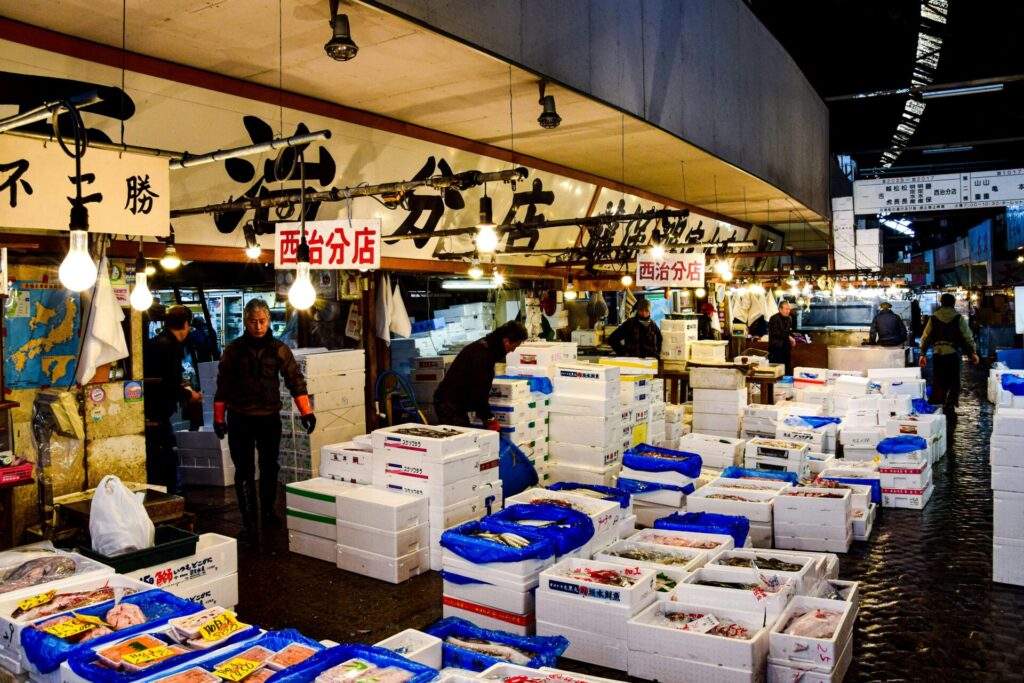
You have made it to the final stop of this itinerary and of course it is a foodie one. After all, what better way to leave a city with such incredible food than by visiting a bustling open air market.
Tsukiji Outer Market is known for its seafood, though there is something for everyone here. Food is delicious and affordable and many vendors will be happy to give you a free taster.
If you have more time:
Here are some optional additional sights/activities you can build into your itinerary or swap with one of the other stops on the list.
Ghibli Museum
Entry to the Ghibli Museum is 1000yen and tickets must be pre-reserved (be quick, they sell out rapidly). Bookings for the following month open at 10 a.m. (JST) on the 10th of each month for the subsequent month. It’s a small museum perfect for Ghibli and animation lovers.
Gōtokuji Temple
If you like cats, you will LOVE this temple. It is known as the birthplace of the lucky beckoning cat and filled with little cat statues.
Meguro River for cherry blossoms
If it’s cherry blossom season, you have to head to Meguro River for stunning views of the blossoms arching over the river. Even outside of the season, the area is cute with lots of local shops.
Yayoi Kusama Museum
The queen of polka dots, Yayoi Kusama, has a museum in Tokyo that is worth a visit for those interested in her art. Tickets must be purchased in advance and cost 1,100yen ($7.40).
Go to a Sumo Show
Tokyo has a bunch of sumo performances that are well worth watching. After all, it is the country’s national sport. Tours are well worth it, but you can also still watch practice for free at Arashio-beya through the windows.
How many days in Tokyo is enough?
I would recommend a minimum of 4-5 days, more if you are planning day trips to Mt. Fuji and Kamakura as well as full days at e.g. Disney Resort. As shown in this guide, you can see the main attractions and start to explore some of the key areas of Tokyo, though there is so much more to this huge city.
Is Tokyo expensive to visit?
Tokyo is an expensive city, though with the right planning and leaving out some of the more pricy attractions, it is more than possible to visit on a budget. If booked early enough, there are plenty of affordable hotels and hostels in Tokyo, food in local restaurants can be around $5 for a meal and many attractions are actually free.
Is Mount Fuji closer to Tokyo or Kyoto?
Mt Fuji is a lot closer to Tokyo than Kyoto and I would recommend heading there from Tokyo. I spent two nights in the area to maximise my chance of seeing the famous mountain, though you can easily do it as a daytrip from Tokyo too.
Hi, I'm Bell

I’m a solo traveller, writer and designer. I created my blog to share the many different ways to travel the world. Learn more about me here!
Latest from the blog:
Travel Off Script contains affiliate links to support the running of the blog. If you make a purchase through these links, I will earn a commission at no extra cost to you. Thank you.

